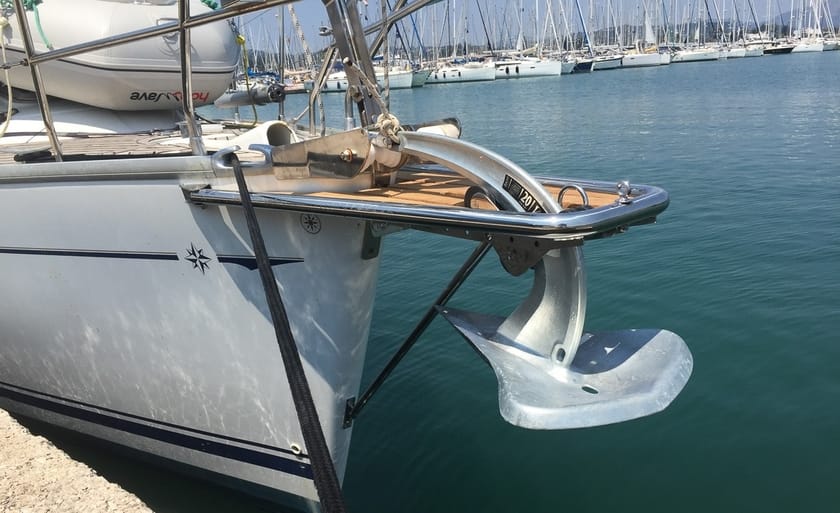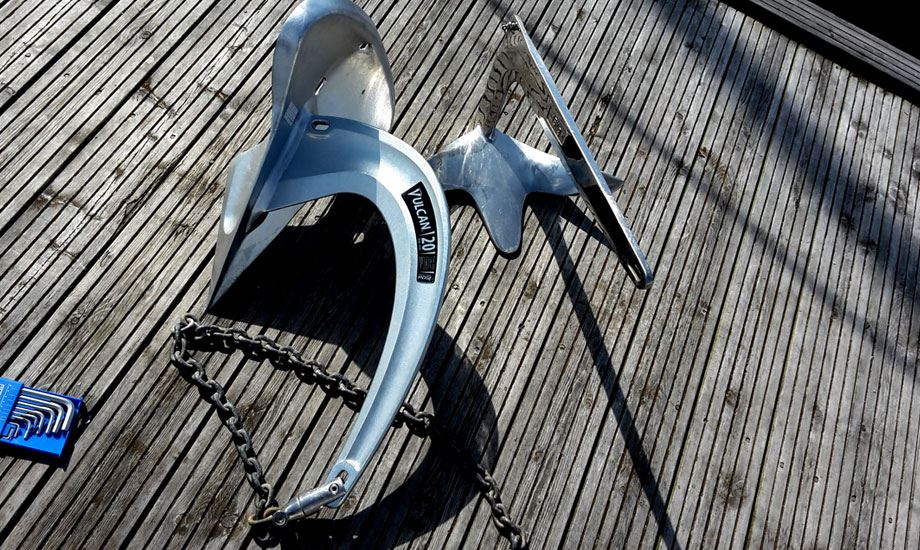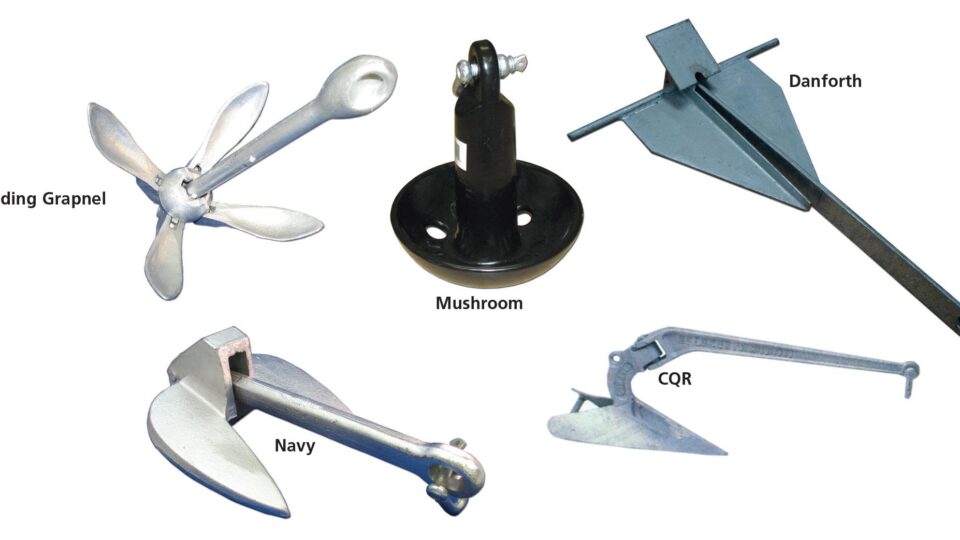Best Types of Sailboat Anchors
When buying a sailboat anchor, you want to ensure the safety of your sailboat, when mooring or setting anchor at the middle of a bay. There are many types of sailboat anchors available in the market and not all of them are constructed of same materials. This article will analyze different types of boat anchors, how to choose the best anchor for your boat, as well as the different types of their construction materials. The right anchor means not just the right design for the type of seabed you’re anchoring on, but also the appropriate size for your sailboat.
Here Are The Most Common Types of Sailboat Anchors
The Spade Anchor – Best Sailboat Anchor Overall
A new generation anchor, it comes in a welded one-part or two-part design that can be easily disassembled with a spanner. Also, this sailboat anchor has excellent holding power. It provides balance and always arrives on the seabed point down, something that enables it to set very quickly. This Rocna Vulcan Galvanized Anchor has amazing holding power and, talking from experience, will never disappoint at any seabed or weather condition. It is also becoming a favorite for people who liveaboard and are looking for strong dependable anchors to have on their sailboat. I couldn’t recommend this anchor more.

Danforth or Fluke
The Danforth, or Fluke anchor, is a very popular anchor. It performs well in sand and mud, possibly the best among many anchors styles. The disadvantage is that outside of these bottoms, it is not a good performer. Thus, it is a sand anchor, which is what most bottoms are comprised of. However, it is the best anchor style in terms of weight to strength or anchoring ratio. Furthermore, it’s easy to store because it lies flat. The angle of the flukes is standard for 32 degrees or up to 45 degrees for soft mud. All these are Danforth boat anchors. You just need to find the right size for your boat.
Delta & Plow, Wing, or CQR
This type of anchors is bulkier than Danforth anchors. Both Delta and CQR are a plow style anchor. The difference between these anchors is that the Delta is a one-piece design, while CQR is a hinged design. Moreover, the delta and plow anchors are easy to store at the bow of your sailboat rather than in a locker. Delta and CQR demonstrate good performance in most bottoms, but they struggle in rock. This Lewmar Delta is a great sailing anchor that you can pick up from Amazon at a great price.
Bruce or Claw
The Bruce or Claw anchor rights itself and plows into the bottom, primarily because of its design. The Bruce is an all-purpose anchor because it performs well in most sea bottoms. These could be sand, mud, and rock. Its three-claw design sets more easily than other anchors. However, the Bruce anchor has an average holding power, which means that you might need a larger anchor, i.e. the Delta or Wing. Take a look at all these Bruce anchors available online and pick one that is the right size for your boat.
Fisherman, Kedge, or Herreshoff
It’s probably the best of all, in terms of holding in thick kelp or rock, but also more specialized. They are the traditional anchor shape that we all know. Modern kedge-style anchors are lighter and can adapt to specialized use. Furthermore, their sharp bills and small flukes hold better in hard sand. Kedge anchors are often used in heavy vegetation seabeds. However, I wouldn’t recommend this type of anchor to have on your sailboat since there are better and more versatile ones out there.
Super Max
This type of anchor is similar to other plow anchor styles. The difference is that it has an adjustable fluke angle. Adjustable angles mean that they can be adjusted for different bottom conditions, unlike the Plow and Delta anchors. Although Super Max is a bulky anchor, it’s really effective.
Mushroom and River Anchor
These anchors are suitable for permanent mooring buoys. This style is designed to gradually dig itself deeper and once inserted, it has great holding ability. On the downside, this anchor does not work well in weedy or rocky bottoms. It is mostly useful in temporary anchoring situations. Although this type of anchor can be handy on your boat or sailboat it shouldn’t be the only one or even the second anchor aboard.
The Bugel Anchor
Another new generation of sailboat anchors, and also the first to sport the rollover bar. Furthermore, it has a simple design that makes it affordable. The Bugel Anchor provides excellent performance in most seabed conditions. However, they were widely replaced by spade anchors and you can’t really find them in most marine stores or online.

Best Material Types For Sailboat Anchors
There is a wide variety of anchors constructing materials. The most common are mild steel, stainless steel, high-tensile steel, and aluminum. Most of the traditional anchors we know are either made of mild or high-tensile steel. The difference between them is that high-tensile steel is 2 or 3 times stronger than mild steel. Keep in mind that these anchors are not corrosion-resistant, thus they have to be galvanized in order to prevent rust. In general, steel anchors (except stainless) should be galvanized. Most sailors choose a galvanized anchor because they are affordable, but also because they have the highest tensile strength. Nowadays, some anchors are made of aluminum and rely on their shape for their function.
Related Content: Stainless vs Galvanized Anchor
Connection Between Sailboats and Anchor Size
So, what’s the minimum size of sailboat anchor for a vessel of a particular length? For example, a 20ft sailboat will need an anchor of 15lb. Then, a 30ft sailboat will need an anchor of 25lb. Finally, a 36ft sailboat will need an anchor that weighs 35lb. Generally, anchors work in two ways. They can be massive and use their weight to keep the boat from drifting, or lightweight and bury themselves in the bottom, in order to stop the boat from moving. Of course, a combination of both is optimal and as a general rule, you want a bigger anchor that you think you need. That way, even if you find yourself in heavier weather than expected, you want one less thing to worry about.
What Characteristics Make a Good Anchor?
Firstly, it must dig in fast every time. Secondly, it has to bury deep, because of the greater the mass of seabed above and ahead of the anchor, the better the holding power. Thirdly, it must have excellent holding power. Finally, it must hold in the different wind conditions. For instance, when the wind shifts, the anchors have to drag around in order to face the new direction. Prefer the anchors that remain buried while dragging, rather than capsizing and pulling out. Moreover, the static holding power can’t be more than 20 times the anchor’s weight. For example, if you use a 15kg anchor, its static hold will be approximately 300kgf. In a 40 knot wind and for a 33ft yacht, this is probably the force that the anchor will receive.
Summary – What is the Best Sailboat Anchor?
In general, all of the above-mentioned anchors meet the four basic performance criteria. However, some of them demonstrate better performance in terms of holding power in certain types of seabed. For example, the Danforth is quite good in any sand, but there’s still a risk of it rolling and pulling out as the currents turn. On the other hand, Fisherman performs excellently in rock or kelp. However, nowadays the design of the new generation anchors provides much better-holding power and are generally more reliable in their movement.
